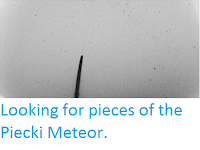Asteroid 2017 CP32 passed by the Earth at a distance of about 918 800
km (2.39 times the average distance between the Earth and the Moon, or 0.61% of the distance between the Earth and the Sun), slightly before 5.35 am
GMT on Sunday 12 February 2017. There was no danger of
the asteroid hitting us, though were it to do so it would have
presented a genuine threat. 2017 CP32 has an estimated
equivalent
diameter of 31-99 m (i.e. it is estimated that a spherical object with
the same volume would be 31-99 m in diameter), and an object towards
the upper end of this range would be predicted to be capable of passing
through the Earth's
atmosphere relatively intact, impacting the ground directly with an
explosion that would be 225 times as powerful as the Hiroshima
bomb. Such an impact would result in an impact crater over a kilometre in
diameter
and devastation on a global scale, as well as climatic effects that
would last for years.
The calculated orbit of 2017 CP32. Minor Planet Center.
2017 CP32 was discovered on 15 February 2017 (three days after its closest approach to the Earth) by the Asteroid Terrestrial-impact Last Alert System (ATLAS) operated by the Institute of Astronomy of the University of Hawaii on Mount Haleakala in Hawaii. The designation 2017 CP32 implies that it was the 815th asteroid
(asteroid P32) discovered in the first half of February 2017 (period
2017 C).
2017 CP32 has a 282 day orbital period, with an elliptical orbit tilted at
an angle of 17.0° to the plain of the Solar System which takes in to
0.63 AU from the Sun (63% of the distance at which the Earth orbits the
Sun; inside the orbit of the planet Venus) and out to
1.05 AU (5%
further away from the Sun than the Earth). This means that close
encounters between the asteroid and Earth are fairly common, with the
last thought to have happened in March 2014 and the next predicted
in July this year. 2017 CP32 also has frequent close encounters with the
planet Venus, with the last though to have occurred in July 2017 next predicted for December 2022. Although it does cross the Earth's
orbit and is briefly
further from the Sun on each cycle, 2017 CP32 spends most of its time
closer to the Sun than we are, and is therefore classified as an Aten
Group Asteroid.
See also...







